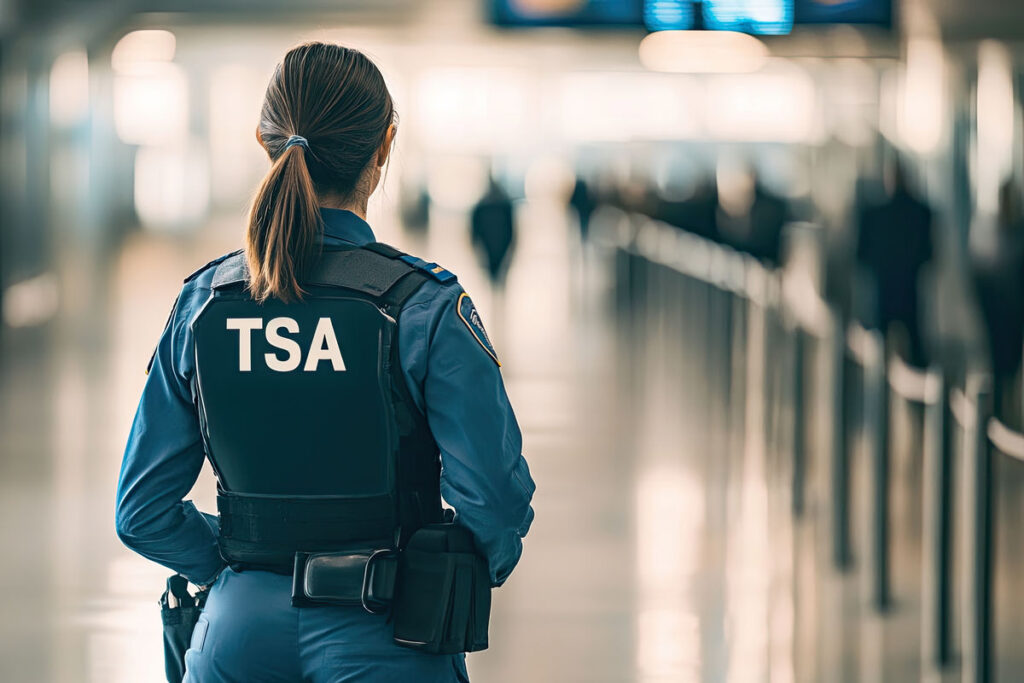
A big shift for travelers in the United States took place this week, with the end of an onerous airport security rule.
On July 8, the TSA officially said it would no longer require travelers in the regular security line to remove their shoes before proceeding through the body scanners. Passengers celebrated the end of the policy, which many experts had long seen as obsolete.
“First, the screening of shoes in a bin can tell nothing, usually,” says Michael Boyd, President & CEO Boyd Group International, an airline analytics firm. “Second, today thousands of people in the PreCheck [line] don’t take off their shoes. The whole thing was a show, not security.”
The rule change is a major win for passenger convenience, but there are plenty of other irksome, outdated requirements that expert travelers are eager to see fall by the wayside as well. The most contentious policy after the shoes-off rule? The TSA’s 3-1-1 liquid requirement, which mandates travelers must only have liquids measuring 3.4 ounces or less in one quart-size clear bag.
“I’d love to see the liquid ban dropped,” says Gary Leff, a travel specialist and aviation expert who writes the blog View From the Wing. “If there was ever a good reason for it (questionable) there’s certainly no longer a justification.” Many U.S. checkpoints today have more advanced scanners that use computed tomography (CT) technology for a more detailed assessment than traditional X-rays, which essentially eliminates the need for a liquid limit.
Leveraging the CT machines, Leff would like to see full-sized liquids allowed in carry-ons. “I mean allowing peanut butter and shampoo greater than 3 ounces through the checkpoint, and not forcing flyers to toss bottles of water into a bin beside the checkpoint and buy a new bottle once you’re through.”
Juggling water bottles in the TSA line is another annoyance that expert travelers are fed up with. That’s at least one full-sized liquid that should definitely be allowed through the checkpoint, according to Tammy Levent, president Elite Travel. “Here’s a thought: let me prove it’s safe,” Levent says. “Let me take a sip. If I don’t pass out, it’s probably just water. Let us bring sealed bottles through. Let us avoid the markup. Let us hydrate without hassle.”
Outside of the U.S., some airports have already begun ending the restrictive size limits on liquids. A handful of airports in the United Kingdom also have the new CT scanners and they allow passengers to bring bottles of liquid up to two liters in their carry-ons. Passengers flying through Edinburgh Airport (EDI), for instance, no longer need to adhere to the 100ml liquid limit for carry-on luggage, the airport announced in June. Other U.K. hubs have the technology installed, but have gone back and forth on allowing larger liquids through the security checkpoint.
Despite the fact that numerous U.S. airports have similar high-tech CT scanners, the TSA currently has no immediate plans to eliminate the 3-1-1 liquid requirement.
The more modernized scanners also have the capability to accurately assess large electronics without passengers removing them from their bags. Travelers flying through Edinburgh no longer need to remove laptops from their bags, either. That’s a policy that should be adopted in the U.S. as well, according to Mandee Migliaccio, CEO of Stepping Out Travel Services. “Eliminating the need to remove laptops and electronics from carry-ons feels like the most logical next step, especially with the rollout of advanced CT scanners in many airports,” Migliaccio says.
Another innovation that is already changing some TSA procedures is the expanded use of biometric IDs. The TSA has expanded its Touchless ID program for PreCheck fliers with carriers such as Alaska Airlines, American Airlines, and Delta. The tech means travelers can opt into facial scans instead of showing their ID at the checkpoint. “We’re already seeing facial recognition and Real ID integration at some checkpoints, and I expect that to become more widespread, making identity verification faster, more secure, and less reliant on manual document checks.
Looking even further ahead, the TSA is already trialing technology for a self-service checkpoint at one U.S. airport. Those two lanes, which are located at Las Vegas Harry Reid International Airport (LAS), use facial recognition and a series of screens to instruct the traveler on how to proceed through the checkpoint. The TSA is collecting data on that pilot program to see if it helps to streamline procedures for passengers. “All signs point to a future where air travel is more efficient, tech-driven, and passenger-friendly without compromising safety,” says Migliaccio.
For the latest travel news, updates and deals, subscribe to the daily TravelPulse newsletter.

